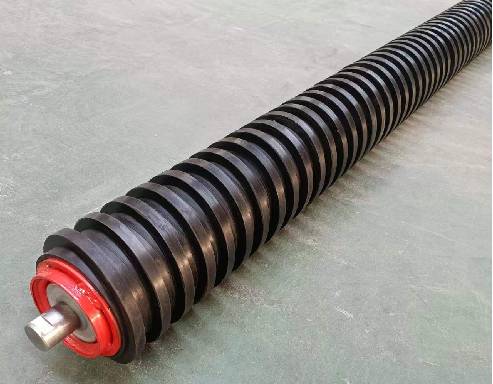 Afrikaans
Afrikaans  Albanian
Albanian  Amharic
Amharic  Arabic
Arabic  Armenian
Armenian  Azerbaijani
Azerbaijani  Basque
Basque  Belarusian
Belarusian  Bengali
Bengali  Bosnian
Bosnian  Bulgarian
Bulgarian  Catalan
Catalan  Cebuano
Cebuano  Corsican
Corsican  Croatian
Croatian  Czech
Czech  Danish
Danish  Dutch
Dutch  English
English  Esperanto
Esperanto  Estonian
Estonian  Finnish
Finnish  French
French  Frisian
Frisian  Galician
Galician  Georgian
Georgian  German
German  Greek
Greek  Gujarati
Gujarati  Haitian Creole
Haitian Creole  hausa
hausa  hawaiian
hawaiian  Hebrew
Hebrew  Hindi
Hindi  Miao
Miao  Hungarian
Hungarian  Icelandic
Icelandic  igbo
igbo  Indonesian
Indonesian  irish
irish  Italian
Italian  Japanese
Japanese  Javanese
Javanese  Kannada
Kannada  kazakh
kazakh  Khmer
Khmer  Rwandese
Rwandese  Korean
Korean  Kurdish
Kurdish  Kyrgyz
Kyrgyz  Lao
Lao  Latin
Latin  Latvian
Latvian  Lithuanian
Lithuanian  Luxembourgish
Luxembourgish  Macedonian
Macedonian  Malgashi
Malgashi  Malay
Malay  Malayalam
Malayalam  Maltese
Maltese  Maori
Maori  Marathi
Marathi  Mongolian
Mongolian  Myanmar
Myanmar  Nepali
Nepali  Norwegian
Norwegian  Norwegian
Norwegian  Occitan
Occitan  Pashto
Pashto  Persian
Persian  Polish
Polish  Portuguese
Portuguese  Punjabi
Punjabi  Romanian
Romanian  Russian
Russian  Samoan
Samoan  Scottish Gaelic
Scottish Gaelic  Serbian
Serbian  Sesotho
Sesotho  Shona
Shona  Sindhi
Sindhi  Sinhala
Sinhala  Slovak
Slovak  Slovenian
Slovenian  Somali
Somali  Spanish
Spanish  Sundanese
Sundanese  Swahili
Swahili  Swedish
Swedish  Tagalog
Tagalog  Tajik
Tajik  Tamil
Tamil  Tatar
Tatar  Telugu
Telugu  Thai
Thai  Turkish
Turkish  Turkmen
Turkmen  Ukrainian
Ukrainian  Urdu
Urdu  Uighur
Uighur  Uzbek
Uzbek  Vietnamese
Vietnamese  Welsh
Welsh  Bantu
Bantu  Yiddish
Yiddish  Yoruba
Yoruba  Zulu
Zulu friction drive pulley
Understanding Friction Drive Pulleys A Key Component in Mechanical Systems
Friction drive pulleys are crucial components in various mechanical systems, enabling efficient power transmission through the application of friction. Unlike traditional belt systems that rely on grooves and teeth, friction drive systems operate on the principle of frictional contact between two surfaces, typically a pulley and a belt or another rotating component.
How Friction Drive Pulleys Work
The functionality of friction drive pulleys relies on the interaction between materials. When a belt makes contact with the pulley, friction forces are generated, allowing the transfer of torque from the pulley to the belt. As the pulley rotates, the frictional grip between these surfaces enables the belt to move along with it, facilitating the transfer of energy. This mechanism is particularly useful in applications where varying speeds and torque are needed.
One of the defining characteristics of friction drive pulleys is their ability to handle slip. When a load increases beyond what the system can bear, the belt can slip against the pulley to prevent damage. This characteristic makes friction drive systems particularly advantageous in machinery where sudden changes in load can occur.
Applications of Friction Drive Pulleys
Friction drive pulleys find application in numerous fields. One of their most common uses is in automotive systems, where they are employed in variator systems of continuously variable transmissions (CVTs). In these systems, the friction drive allows for smooth acceleration and deceleration without the need for gear changes, enhancing the efficiency and comfort of the driving experience.
In industrial settings, friction drive pulleys are used in conveyor systems and manufacturing equipment. Their ability to accommodate varying loads and speeds makes them ideal for processes that require flexibility. Additionally, they are found in robotic systems and automation, where precise movement control is essential.
friction drive pulley

Advantages of Friction Drive Pulleys
Several advantages make friction drive pulleys a preferred choice in many applications. One significant benefit is their simplicity. The absence of complex mechanisms, such as gears, reduces the maintenance needs and potential failure points in a system. This simplicity also translates to cost-effectiveness, as fewer components often lead to lower manufacturing and replacement costs.
Friction drive systems also offer a high degree of adaptability, allowing for precise control over speed and torque. This adaptability is particularly beneficial in applications where specific performance criteria must be met.
Challenges and Considerations
Despite their advantages, friction drive pulleys are not without their challenges. One primary concern is wear and tear. The constant friction between surfaces can lead to material degradation over time, necessitating regular inspection and maintenance. Additionally, factors such as humidity, temperature, and the presence of contaminants can affect the performance of friction drive systems. Therefore, careful material selection and surface treatments are essential to enhance longevity and reliability.
Conclusion
In conclusion, friction drive pulleys represent an innovative solution for power transmission in various mechanical systems. Their unique operating principles, combined with their adaptability and cost-effectiveness, make them ideal for a diverse range of applications. However, awareness of their limitations and the importance of regular maintenance is critical for ensuring optimal performance. As technology evolves, friction drive systems are likely to become even more integral to advancements in engineering and manufacturing, continuing to drive efficiency and innovation across industries.
-
Revolutionizing Conveyor Reliability with Advanced Rubber Lagging PulleysNewsJul.22,2025
-
Powering Precision and Durability with Expert Manufacturers of Conveyor ComponentsNewsJul.22,2025
-
Optimizing Conveyor Systems with Advanced Conveyor AccessoriesNewsJul.22,2025
-
Maximize Conveyor Efficiency with Quality Conveyor Idler PulleysNewsJul.22,2025
-
Future-Proof Your Conveyor System with High-Performance Polyurethane RollerNewsJul.22,2025
-
Driving Efficiency Forward with Quality Idlers and RollersNewsJul.22,2025





























